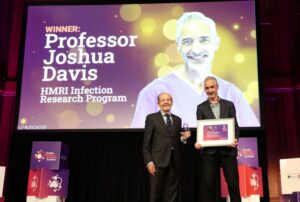
SYDNEY — The European Space Agency (ESA) has inaugurated a new deep space antenna in Australia, marking a significant step in enhancing collaboration between Europe and Australia in the field of space exploration. The ceremony, held on October 4 in New Norcia, Western Australia, celebrated the completion of a 35-meter antenna designed to communicate with spacecraft across the solar system.
This new addition, named New Norcia 3, is the second antenna at the New Norcia site and the fourth in ESA’s global Estrack network. “This strategic investment reinforces ESA’s deep space communication capabilities and maximizes the return of our missions’ most valuable asset: data delivered from spacecraft voyaging far from Earth,” stated Josef Aschbacher, ESA’s director general, during the inauguration.
Advanced Technology and Global Network Expansion
The New Norcia 3 antenna, expected to begin operations by March next year, boasts state-of-the-art upgrades, including cryocooling of the receiver to reduce noise and enhance sensitivity. “It’s the most modern, most advanced antenna ESA has,” remarked Mehran Sarkarati, head of ESA’s ground station engineering division, at a recent briefing.
This development follows the growing demand for space communications, with similar antennas located in Argentina and Spain. “Everything is becoming more data intensive: our payloads and instruments are becoming more advanced, and our missions are increasing,” Sarkarati explained. Despite this expansion, he noted, “Even with this, we are going to be short on capacity,” hinting at ESA’s proposal to build a fifth deep space antenna in South America.
Economic and Strategic Implications
The construction of New Norcia 3 cost ESA approximately 62.3 million euros ($73.2 million), with the Australian government contributing 4 million Australian dollars ($2.6 million) to the project. Enrico Palermo, head of the Australian Space Agency, emphasized that the investment was aimed at general support rather than a specific project component. He projected an economic impact of $4.5 million annually over the antenna’s 50-year lifespan. “That’s quite a significant economic return, locally, on the $4 million investment,” Palermo noted.
“It deepens Australia’s reputation in deep space communications,” Palermo said. “We want to remain a trusted partner in the world’s exploration missions, and we see that continuing through New Norcia 3.”
The New Norcia site is managed by Australia’s national science agency, CSIRO, which also operates NASA’s Deep Space Network complex near Canberra. This collaboration underscores Australia’s pivotal role in global space communications.
Strengthening Europe-Australia Space Relations
The announcement comes as Europe and Australia seek to expand their longstanding partnership in space exploration. During the International Astronautical Congress on September 29, the Australian government revealed plans to pursue a formal cooperative agreement with ESA. This agreement could potentially elevate Australia’s status within ESA to a level similar to that of Canada, enabling Australian entities to participate in ESA programs.
“New and exciting opportunities between the European and Australian space sectors are opening up with Australia announcing this week a mandate to begin negotiations on a cooperative agreement with ESA,” Aschbacher said.
Meanwhile, the inauguration of New Norcia 3 not only strengthens the technical capabilities of ESA’s Estrack network but also symbolizes a deepening of international cooperation in space exploration. As both regions continue to invest in space technology and infrastructure, the potential for collaborative missions and shared scientific advancements grows ever more promising.
Looking ahead, the successful operation of New Norcia 3 will likely pave the way for further investments and partnerships, ensuring that both Europe and Australia remain at the forefront of space exploration and communication.




